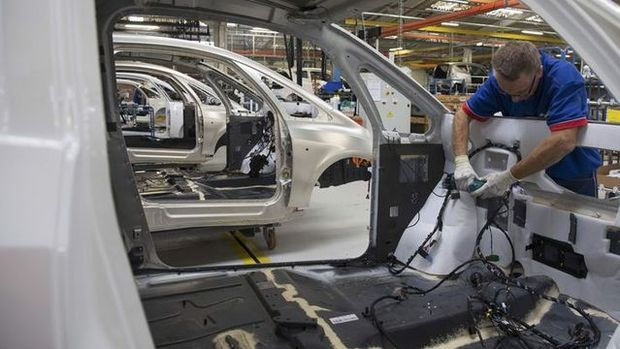Striking autoworkers in the US reach tentative agreement with Ford
The United Auto Workers Union (UAW), which has been on strike for about six weeks against 3 major automakers in the US, has reached a 4.5-year temporary agreement with Ford Motor. UAW President Shawn Fain announced in a statement that they have won a "big victory" in the strike they call "Stand Up." Stating that the strike has yielded results and that they have reached a "historic" agreement with Ford on the 40th day of the strike, Fain said that the temporary agreement will be evaluated. Fain reported that the temporary agreement will be voted on by the UAW National Ford Council and that if approved, the agreement will be sent to the members. Fain, who stated that the details of the agreement will be conveyed via Facebook live broadcast, stated that regional meetings will be held with local leaders to advance the temporary agreement. Fain emphasized that they have achieved gains that no one thought possible and drew attention to the fact that Ford has put 50 percent more on the table compared to the beginning of the strike. "We told Ford to 'strip their money' and they did." Fain said that the agreement reached opened a new path for fixing things at the three major automakers and in the automotive industry. Calling on Ford workers to end strike UAW Vice President Chuck Browning also stated that union members united against the three major automakers and reminded them that "record profits mean record contracts." Browning, who stated that they reached a "winner" agreement in terms of wage increases, cost of living adjustments, annual bonuses for retirees and other economic gains, reported that they achieved a 25 percent general wage increase. Browning noted that they expected the top wage rate to increase by more than 30 percent to over $40 an hour with the cost of living adjustments. Stating that the starting wage rate would increase by 68 percent and that the wage increase for temporary personnel would exceed 150 percent, Browning said that some employees in Sterling Axle and Rawsonville would also see an 85 percent increase after the agreement was ratified. Browning, drawing attention to the fact that UAW members working at Ford will receive more wage increases over the next 4.5 years than in the last 22 years combined, noted that workers’ wages will increase 11 percent immediately after the agreement is ratified. Calling on striking Ford workers to return to their jobs, Browning said, “This is a strategic move to get the best agreement possible. We will go back to work at Ford in order to keep the pressure on Stellantis and General Motors (GM).” Workers at 3 automobile plants go on strike together for the first time After the UAW’s negotiations with Ford, GM and Stellantis regarding a new contract for approximately 150,000 workers failed to reach an agreement as of September 14, the expiration date of the current contract, approximately 13,000 workers decided to go on strike at 3 factories in Michigan, Missouri and Ohio. Thus, the strike by auto workers targeting the 3 major auto manufacturers started on September 15, and for the first time in the 88-year history of the union, workers at 3 automobile plants went on strike together. The UAW, which has expanded the strike to include other factories and a parts distribution center, announced Monday that 6,800 more members at Stellantis’ Sterling Heights assembly plant were on strike. The union announced yesterday that 5,000 of its members had started a strike at GM’s “largest and highest-earning” plant. This brings the total number of workers on strike in the U.S. auto sector to more than 45,000. In its latest analysis of the “Stand Up” strike, Michigan-based economic consulting firm Anderson Economic Group (AEG) reported that the cost of the strike exceeded $9.3 billion in five weeks.


